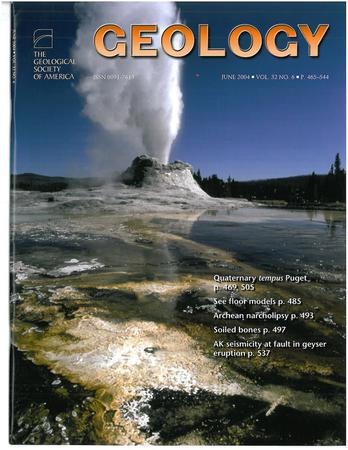200 ka 年以来整个次喜马拉雅山的持续变形
IF 4.6
1区 地球科学
Q1 GEOLOGY
引用次数: 0
摘要
喜马拉雅山主锋面隆起(MFT)目前通过次喜马拉雅山的隆起和变形,容纳了印度板块和欧亚板块之间约一半的汇聚,即 12-23 毫米/年。虽然现代和百万年时间尺度上的形变有据可查,但几乎没有任何定量数据可以制约这一关键构造单元沿线和内部的第四纪时间尺度形变速率。填补这一知识空白对于更好地理解这一人口稠密的喜马拉雅地区的构造和地震周期至关重要。我们利用最近建立的发光测温技术,对次喜马拉雅地区105年时间尺度上的剥蚀率进行了量化,该技术记录了地壳最后几公里的剥蚀情况。发光热年代测定法的超低闭合温度使我们能够解析西瓦利克组(尼泊尔)岩石的热历史,这些岩石的最高埋藏温度约为 120 °C。我们从尼泊尔西部到不丹东部采集了33个样本,其中22个样本得出了过去约200k.y.期间约3-11 mm/yr的出露速率,假设推力倾角为30°,我们将这些数值转换为约6-22 mm/yr的最小累积推力滑动速率。我们的发光测温结果表明,自至少 200 ka 年以来,次喜马拉雅褶皱-推力带,尤其是喜马拉雅褶皱-推力带,容纳了至少 62% 的喜马拉雅山脉辐合。我们的数据还显示,在整个这一时期,一些锡瓦里克内部的推力活动频繁,这意味着造山楔的内部变形和应变分区可能已经发生。本文章由计算机程序翻译,如有差异,请以英文原文为准。
Sustained deformation across the Sub-Himalayas since 200 ka
The Himalayan Main Frontal Thrust (MFT) currently accommodates approximately half, i.e., 12–23 mm/yr, of the convergence between the Indian and Eurasian tectonic plates by uplift and deformation of the Sub-Himalayas. While deformation is well documented at modern and million-year time scales, almost no quantitative data are available that constrain Quaternary time scale deformation rates along and within this key tectonic unit. Filling this knowledge gap is crucial to better understanding tectonics and the seismic cycle in this densely populated Himalayan region. We quantify exhumation rates in the Sub-Himalayas using the recently established luminescence thermochronometry technique over time scales of 105 yr, which documents exhumation over the final few kilometers of Earth’s crust. The ultra-low closure temperature of luminescence thermochronometry enables us to resolve thermal histories from the Siwalik Group (Nepal) rocks, which have experienced maximum burial temperatures of ~120 °C. An extensive set of 33 samples was collected from western Nepal to eastern Bhutan, from which 22 yield exhumation rates of ~3–11 mm/yr over the past ~200 k.y. We converted these values to minimum cumulative thrust slip rates of ~6–22 mm/yr, assuming a thrust dip angle of 30°. Our luminescence thermochronometry results show that the Sub-Himalayan fold-and-thrust belt, particularly the MFT, accommodates at least 62% of Himalayan convergence since at least 200 ka. Our data also show activity of some intra-Siwalik thrusts throughout this period, implying that internal deformation of the orogenic wedge and strain partitioning may have occurred.
求助全文
通过发布文献求助,成功后即可免费获取论文全文。
去求助
来源期刊

Geology
地学-地质学
CiteScore
10.00
自引率
3.40%
发文量
228
审稿时长
6.2 months
期刊介绍:
Published since 1973, Geology features rapid publication of about 23 refereed short (four-page) papers each month. Articles cover all earth-science disciplines and include new investigations and provocative topics. Professional geologists and university-level students in the earth sciences use this widely read journal to keep up with scientific research trends. The online forum section facilitates author-reader dialog. Includes color and occasional large-format illustrations on oversized loose inserts.
 求助内容:
求助内容: 应助结果提醒方式:
应助结果提醒方式:


